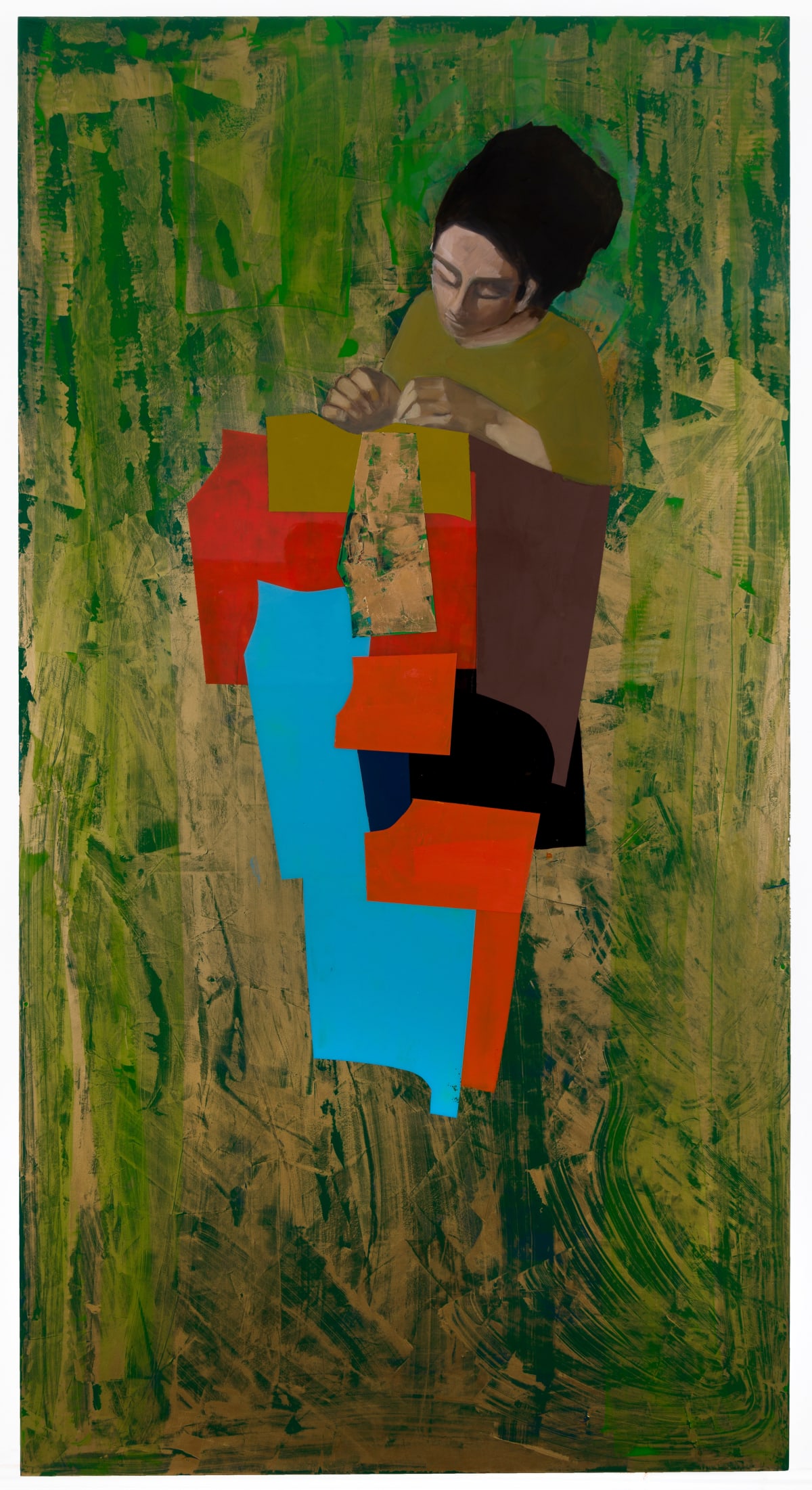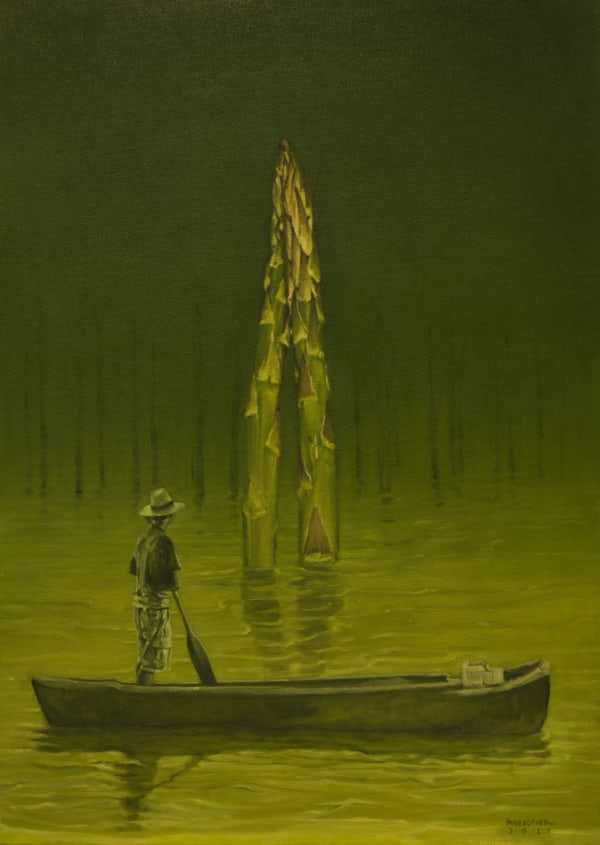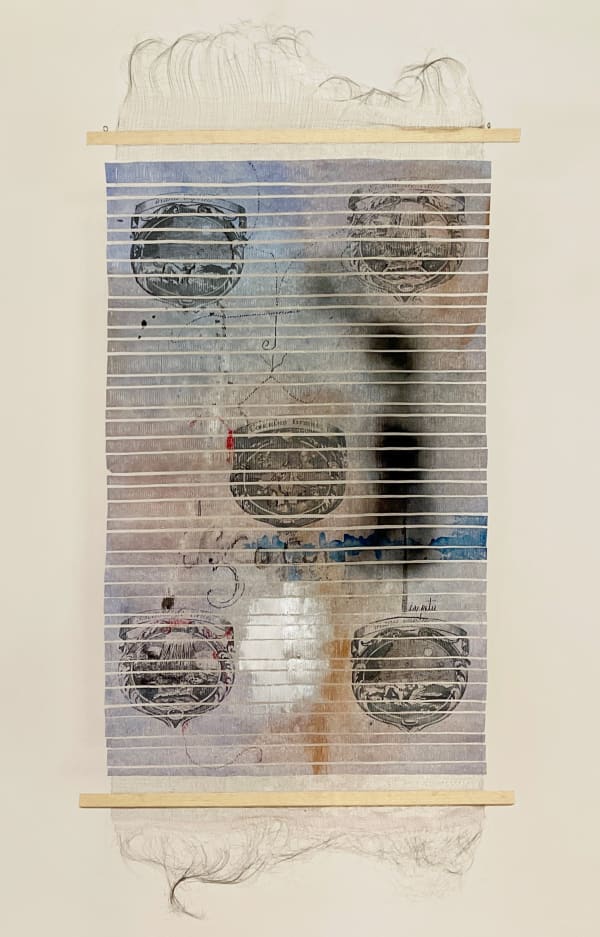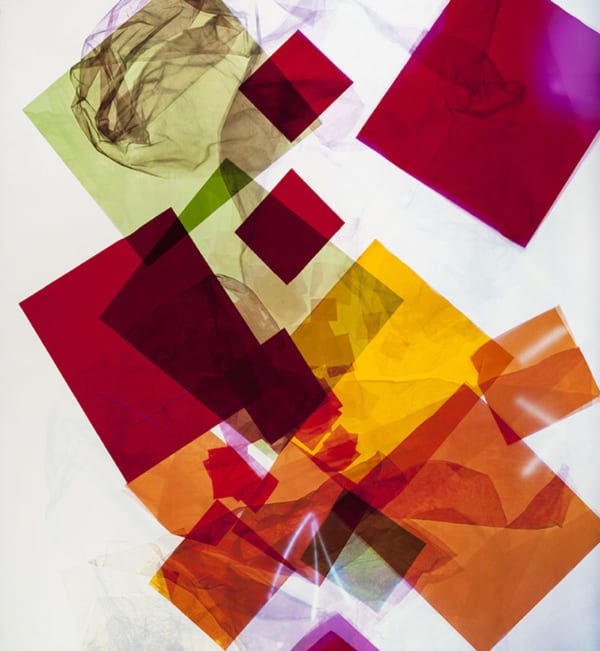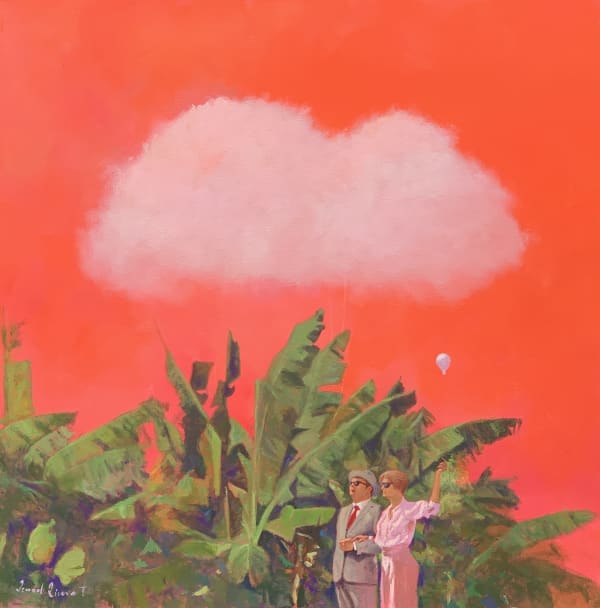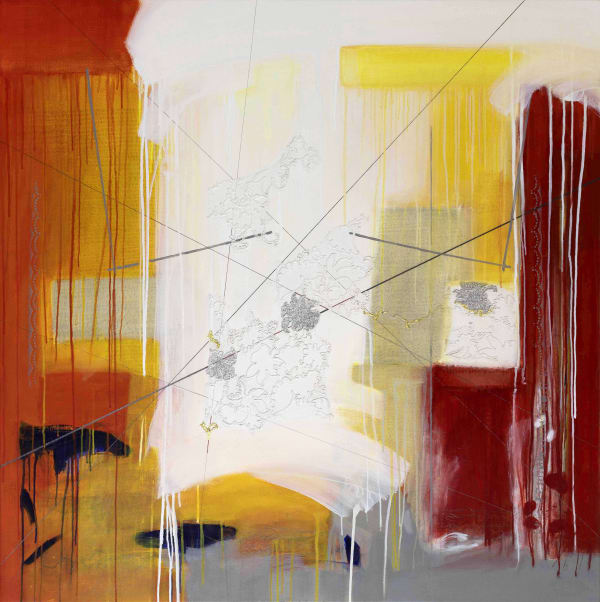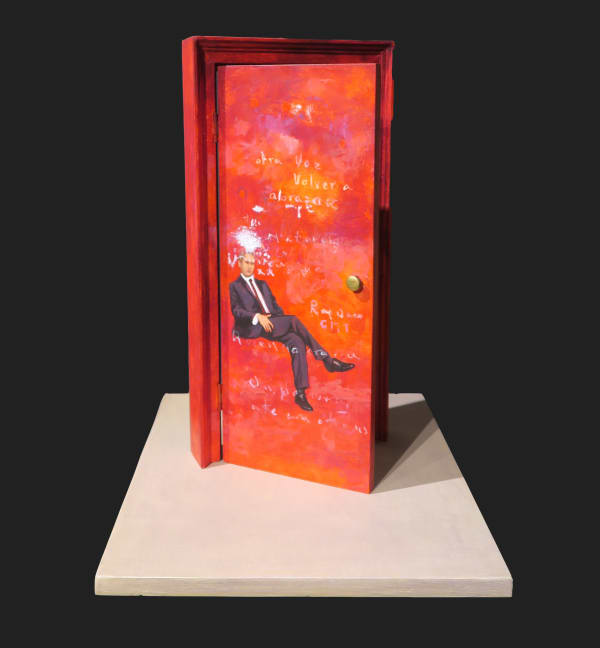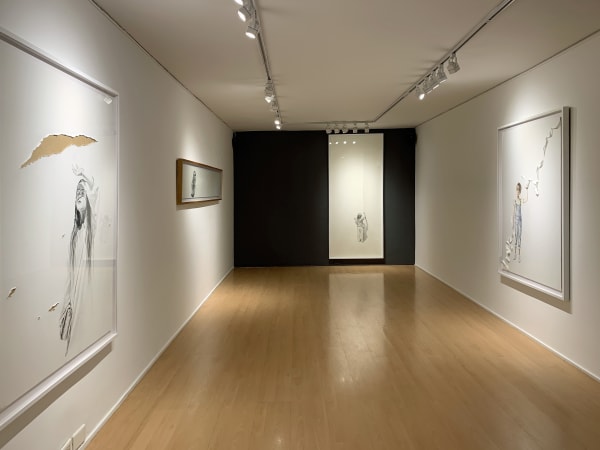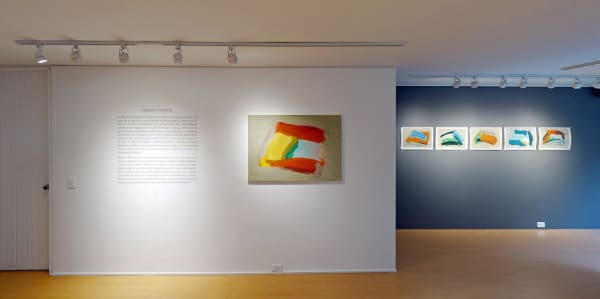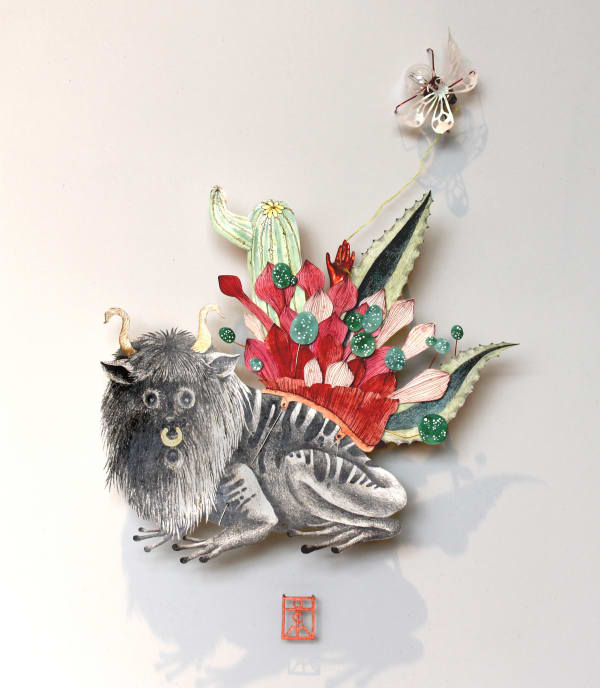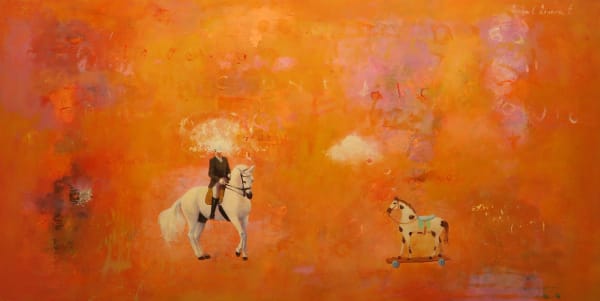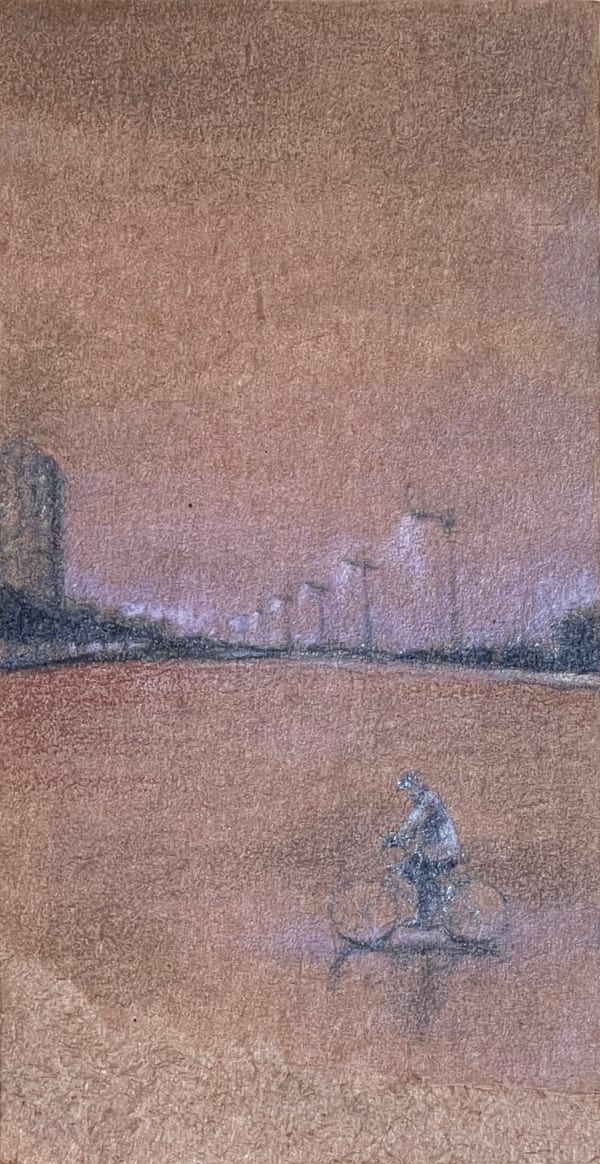Past
-

Personal Botany
Recent artworks by Pedro Ruiz 4 - 29 May 2024 PERSONAL BOTANY A Tribute to Botanical Intimacy The exhibition 'Personal Botany,' like much of Pedro Ruiz's work, aims to present the plant kingdom not only as a visual spectacle but also as an introspective tool that questions our social and cultural identity and its complexities. This body of work navigates... Read more -

The Skin of Painting
Recent works by Santiago Uribe-Holguín 16 Mar - 26 Apr 2024 THE SKIN OF PAINTING By Constanza Ontiveros * What lies behind the changing anatomy of a stroke? In his new exhibition at BEA, the renowned Colombian artist Santiago Uribe-Holguín reinvents the expressive possibilities and physical properties of oil painting, one of the most emblematic techniques in the history of Western... Read more -

Recess
Recent Works by Jose Ismael Rivera 10 Feb - 8 Mar 2024 RECESS I often contemplate the purpose of my existence, a journey marked by challenges. Upon waking, I find myself on the edge of the bed, gaze fixed on the floor, questioning: What brings me to this moment? It's like a curious turn of fate, transitioning from dreams to reality, wondering... Read more -

Still Lives
Recent works by Carlos Alarcón 21 Oct - 30 Nov 2023 This exhibition is a personal tribute to still lives as a genre of enduring expression, as a remembrance of the finite, of the beauty we possess but cannot contain, of life in all its forms and patterns, of the volatile relationship with the surroundings and the created objects.
Es una especie de homenaje personal a las naturalezas muertas como un género de expresión permanente, en esa remembranza de lo finito, de la belleza que poseemos pero que no podemos contener, de la vida en todas sus formas y patrones, de la relación volátil con lo circundante y los objetos creados. Read more -

Listening to Silence
Recent works by Angélica Chavarro 9 Sep - 6 Oct 2023 LISTENING TO SILENCE By Constanza Ontiveros* Is it possible to perceive beyond silence? In her first solo exhibition at BEA, Colombian artist Angélica Chavarro invites us to quiet the ever-present noise of the mind and uncover the textures, vibrations, layers, and whispers that hide in plain sight. Fragments of natural... Read more -

And, What Shall We Name It?
Recent Works By Jairo Llano 3 - 30 Jun 2023 AND WHAT SHALL WE NAME IT? *By Constanza Ontiveros Can an image capture both the ephemeral and the eternal? Can fragility coexist with beauty? In his first solo exhibition at BEA, Colombian artist Jairo Llano explores these and other existential questions through his camera lens. While these queries bear a... Read more -

KIKO
Recent Works by Pablo Arrázola 6 - 26 May 2023 Kiko, Where are you? Where did you go? The mind is remarkable. Have you ever wondered why we associate black and white with the past? What is it about these graphite scribbles that beckon anachronism? Are you in a timeless dimension? In fluctuating space? Is that what paper is? A... Read more -

ARTBO Fin de Semana
Obras de Carlos Nariño, Armando Castro-Uribe y Pedro Ruiz 20 - 23 Apr 2023 Read more -

We Are Blue
Group Show 28 Jan - 24 Feb 2023 WE ARE BLUE Group Show Works by Carlos Alarcón, Angélica Chavarro, Carolina Convers, Luis Luna, Catalina Prado, Ismael Rivera, Pedro Ruiz, and Jerónimo Villa. Blue is a polysemic color: it can evoke both sorrow and calm. Blue as ice and blue as light, blue as the summer day. Various... Read more -

Crossroads
Works by Juan Carlos Rivero-Cintra 24 Sep - 22 Oct 2022 CROSSROADS Works by Juan Carlos Rivero-Cintra Which smells, colors and flavors connect us to our homeland? How do you build a new life without forgetting the place we once called home? In his latest solo exhibition at Beatriz Esguerra Arte, Cuban-born artist Juan Carlos Rivero-Cintra (1972) explores the yearning, nostalgia,... Read more -

Fiorhe
Colectiva de Artistas de Beatriz Esguerra en Fiorhe 26 Aug - 10 Oct 2022 Read more -

Viriditas - A Song to Flora
Recent Works by Carol Young 20 Aug - 16 Sep 2022 VIRIDITAS A Song to Flora Viriditas, which in Latin means 'greenness,' is the title of Colombian artist and ceramist Carol Young's most recent exhibition; it is an ode to the plant world, to its vitality and exuberance. The forms gathered in this exhibition, fantastic, relics of an archaic flora, are... Read more -

Summer Group Show
7 Jul - 6 Aug 2022 Read more -

The Diversity of the World
Recent works by Luis Luna 21 May - 18 Jun 2022 THE DIVERSITY OF THE WORLD There is a humanist path in the work of Luis Luna, and it begins with his interest in alchemy. One of his current stimuli and references is a bronze warp produced by the weaver Mónica de Rhodes. With this starting point, and without a frame,... Read more -

ARTBO Fin de Semana
Gallery Group Show 21 - 24 Apr 2022 Read more -

Manipulated or Not?
A photography group show 5 - 31 Mar 2022 MANIPULATED OR NOT There is much more than meets the eye. By Constanza Ontiveros Valdés Featuring the works of Colombian photographers Mario Arroyave, Luciano Denver, Olga Gabrielle, Max Steven Grossman, Santiago Harker, Jairo Llano, Lorenza Panero and Maritza Wild-Chateau Is photography a reflection or construction of reality? Can it be... Read more -

Nonabrasive Times
Recent Works by Jeronimo Villa 29 Jan - 26 Feb 2022 Nonabrasive Times Works by Jeronimo Villa The landscape is constantly changing. It is neither static nor perishable; it is mutant, fluctuating, fluid. In the distance, mountains resemble still paintings, marble sculptures. We live divergent times: we have aged, and the landscape is barely waking up. Under our footsteps, everything moves... Read more -

Conversations in Small Format
A Small Format Gallery Group Show 9 - 22 Dec 2021 CONVERSATIONS A Small Format Gallery Group Show After a year of hardwork and adjustment, we are happy to share that 2021 ends on a high note. To celebrate the end of year, BEA is proud to present 'Conversations,' a group show featuring the works of Colombian artists: Luis Luna, Carol... Read more -

Painted Numismatics
Miniature paintings by Carlos Alarcon 23 Oct - 20 Nov 2021 PAINTED NUMISMATICS Painted Numismatics is a series of paintings I started in 2019, induced by the contemplation of one of my collections. One of the many things I've collected since I was a child are coins of all kinds, from any country, material, year or theme. It's a collection that... Read more -

Kokoro
Recent Works By Teresa Currea 21 Aug - 17 Sep 2021 KOKORO / HEART Intercoastal Visions After many steps taken, kilometers traveled, climbing and descending mountains and stairs, one realizes that the most important journey is the one taken inside ourselves. This expedition leads us to scrutinize the tenor of our beliefs, feelings, and thoughts and find ourselves filled with the... Read more -

Processes
A Journey Through Pedro Ruiz's Series 26 Jun - 14 Aug 2021 Beatriz Esguerra Art is proud to present “Processes,” a journey through Pedro Ruiz’s series and his evolution as an artist. Pedro Ruiz's work occupies itself with social and political issues that affect countries worldwide. Nature and the concept that it is a force that we cannot control and must live... Read more -

Measured Irreverence
Recent Works By Ismael Rivera 22 May - 18 Jun 2021 Ismael Rivera is an artist who closely observes humanity: world and political leaders, society and regular people. With subtlety and black humor he captures and interprets it, resulting in paintings that invite the observer to question himself and the surrounding world. With intelligence and mischief, Rivera perceives those acts that... Read more -

Constellations
Recent works by Elsa Zambrano 15 Apr - 14 May 2021 Elsa Zambrano began working on her latest series over a year ago, before the pandemic started. Initially, it was meant to consist exclusively of paintings, but in the midst of the lockdown, the series took an unexpected turn. Little by little, objects, postcards, and images that comprise the artist’s personal... Read more -

Mending, Female Spirit
Recent works by Consuelo Manrique 27 Feb - 26 Mar 2021 As she has been doing for several years now, Consuelo Manrique continues to think about those women who have been affected by war. Through her drawings and paintings, she has embodied their pain and their slow process of healing and forgiving, but never of forgetting. In her latest works, Manrique... Read more -

Disperse
Recent Works by Carolina Convers 23 Jan - 19 Feb 2021 The works that make up this exhibition were conceived almost a year ago, a process that in some way has been affected by the COVID-19 confinement. During this time, different images began to arise: dresses, castaways, sundry figures. Due to the dispersion I found myself in, I created random paintings... Read more -

Great Works, Small Scale
A Gallery Group Show 28 Nov 2020 - 15 Jan 2021 The year 2020 was one of difficulties, challenges and teachings. We had to adapt to a new reality that positively taught us to view life from a different perspective. At BEA we worked non-stop, with perseverance and enthusiasm, always thinking about the well-being of our artists and collaborators. We shared... Read more -

Four x Five
Organized by Dallas Art Fair Projects 11 - 25 Nov 2020 The human figure is one of those timeless topics that have been consistently explored throughout art history. 'Navigating Space' is a group show that compiles the work of four different artists whose expressions, although all quite different, work around the exploration of this theme. The way they treat space, the... Read more -

Apuchumala
Recent Works by Pablo Arrazola 16 Oct - 13 Nov 2020 In being unable to find a word or concept to define this feeling, I recurred, childishly, to making something up. Beatriz Esguerra Art is pleased to announce rising Colombian artist, Pablo Arrázola's first solo exhibition at the gallery. 'Apuchumala' is a neologism that, in its strictest form, refers to a... Read more -

Sounds of Silence
Works by Pablo Posada, Alejandro Saiz and Carol Young. 11 Sep - 2 Oct 2020 The work of these three artists is paradoxically earthly and ethereal at the same time. There is a subtle spirituality to them, an attempt to connect with nature. Pablo Posada's work is an expression of his observations on matter: how it flows through time and space, how it evolves and... Read more -

Navigating Space
Works by Pablo Arrazola, Mario Arroyave, Carlos Alarcon and Armando Castro. 8 Jul - 9 Aug 2020 The human figure is one of those timeless topics that have been consistently explored throughout art history. 'Navigating Space' is a group show that compiles the work of four different artists whose expressions, although all quite different, work around the exploration of this theme. The way they treat space, the... Read more -

Shapes and Shades
Recent Works by Santiago Uribe-Holguin 11 Jun - 9 Jul 2020 Santiago Uribe-Holguín's work has been in constant growth throughout his career. He has always expressed an interest in layers and first began exploring them through the use of materials such as sand and marble dust. He is currently delving into color and abstraction through oil painting, a process that began... Read more -

insignia
Works by Pedro Ruiz, Mario Arroyave, Armando Castro, Teresa Currea, Carolina Convers, Juan Carlos Rivero-Cintra and Pablo Arrazola. 6 - 29 May 2020 Insignia is a group show with works that encompass Beatriz Esguerra Art's particular style. One of the characteristics that stands out is an atmospheric feel. All the works featured in this exhibition are, each in their own way, etheral. They are precise but asbract at the same time, hinting at... Read more -

Shades of Women
Works by Carol Young, Elsa Zambrano, Carolina Convers, Consuelo Manrique, Adriana Cuellar and Priscilla Gonzalez 7 Mar - 3 Apr 2020 Femininity is a complex, diverse and dynamic concept, and to celebrate Women's Month, we have selected a series of works that seek to broaden the lens through which we are used to appreciating it. There is a quiet melancholy in the works of Priscila González and Consuelo Manrique. They both... Read more -

New Arrivals
Works by Luis Alejandro Saiz, Carolina Convers, Pablo Arrazola, Mario Arroyave, Teresa Currea, Pedro Ruiz, Danilo Rojas and Ismael Rivera 8 - 28 Feb 2020 This new year brings a refreshing wave of artists and works to our gallery. Beatriz Esguerra Art is pleased to present a group show that will open this Saturday, 8th February, and which will feature the latest creations of some of our most recognized artists. Carlos Alarcón, Pablo Arrázola, and... Read more -

Dissections of the Infinite
Recent Works by Mario Arroyave 23 Nov 2019 - 23 Jan 2020 Reality is articulated like a kaleidoscope of diverse infinites, some larger than others, that occur indefinitely under multiple frequencies, where each atom contains an eternity within itself. As human beings, we live within a metric system that begins with our perception of time and spreads through the limits of what... Read more -

Origins
Featuring works by Carlos Nariño, Pablo Posada, and Carol Young 8 - 24 Oct 2019 Read more -

Object of Contemplation
Carol Young's Intimate Sculptures 31 Aug - 27 Sep 2019 Artistic processes obey subjective and profound motivations. In Carol Young's case, her works surge in an intuitive way, without much premeditation, but when she comes into contact with clay, the 'sentimental cause' that guides her work surges. It is in this way that through her work, ceramic becomes thin shrouds... Read more -

Virtual Landscapes
An online exclusive exhibition of Max Steven Grossman's works. 13 Aug - 19 Sep 2019 For Max Steven Grossman, the idea of landscape extends far beyond that found in nature. Subjects that are on the verge of being lost or going extinct in our contemporary world are present throughout his photographic work. Using constructed compositions, the artist emphasizes on the notion of the inevitability of... Read more -

About Paper
A Gallery Group Show 27 Jul - 22 Aug 2019 Paper is a multifaceted element, rich in possibilities. This exhibition seeks to explore the role paper plays in works of art, as well as the wide variety that exists within the material itself. For instance, notepad paper is an intimate surface, mainly used to document artists' most spontaneous thoughts and... Read more -

Don't Leave me in the Dark
Recent works by Juan Carlos Rivero-Cintra 8 Jun - 5 Jul 2019 Juan Carlos Rivero-Cintra's upcoming series Don't Leave Me in the Dark is a follow-up of one of his past series, Memories as Metaphors. In both, the artist explores the theme of migration and displacement through the juxtaposition of elements. He uses organic objects to depict the nostalgia of what migrants... Read more -

Pedro Ruiz's ManiFiesta
For Everything And Against Nothing 4 - 31 May 2019 In his upcoming exhibition, Pedro Ruiz addresses the issue of a possible reconcilement with our natural habitat through a poetic manifestation. The artist seeks to encourage the public to present ourselves together in favor of Mother Nature, instead of expressing dissatisfaction or inconformity towards an ideology or institution. We currently... Read more -

Altars and Devotions
Works by Teresa Currea 16 Mar - 6 Apr 2019 It is the first time Teresa Currea adresses the theme of her most recent exhibition 'Altars and Devotions'. In it, the artist refers to the aesthetic experience of visiting sacred places. Marvled at the variety of elements through which beliefs are communicated, the artist reccurs to architecture, color, shapes, and... Read more -

Assorted
A Gallery Group Show 21 Jan - 8 Mar 2019 Read more -

Common Place
A Pedro Ruiz Project 2 Jan - 3 Feb 2019 Resorting to commonplace symbols, such as the image of a heart to represent love, can seem a risky practice in circles where originality, intellectual sophistication, and demand for innovation are considered an imperative. However, in this case and taking into consideration the humorous side, this idea could achieve a deeper meaning. Rather than be perceived as a mistake, it could be perceived as the representation of a general feeling that has evidently ceased to be taken into wide consideration as a general principle.
“Love is the only survival mechanism.”
Throughout history we have been guided by our knowledge, our reasoning, our respected intellectual faculties, which provide us with the ability to differentiate right from wrong, truth from untruth. Nevertheless, harmony does not seem to be the norm, and not just within our society; our overall relationship with nature and with the planet itself seems to be discordant.
Judging by the results, one can only arrive at the same conclusion as that of a meticulous observer of our nature:
“magis magnos clericos non sunt magis magnos sapientes”.
One can believe that the path of permanent progress is the right one, if we agree with the idea that competing, subjecting, slaughtering, deceiving, and stealing are occurrences demanded by the common good. Many theories seem to support a system where there is only room for the strongest. However, other models we can use as paradigms are also in place: societies where the need to possess, turning us into unconscious predators, loses every trace of reasonability vis-à-vis an attitude of permanent cooperation.
Some populations, for instance, offer guidelines to real democracy where decisions are not made based on a consensus of the majority, but when the group as a whole is in agreement. Nature itself is a source of ideas: bees, ants and even domesticated dogs exhibit behaviors that do not abide by the law of the survival of the fittest.
Some years ago I ran into a concept I had never considered before; the idea that one could think with one’s heart was absolutely unknown to me. In an excerpt of his conversation with Chief Mountain Lake, a Pueblo Indian, Carl Gustav Jung narrates their talk during which the Chief describes white people. The conclusion of this brief interaction is that white people must be crazy because they say they think with their heads. At Jung’s astonishment, Mountain Lake stated that his people think with their hearts.
It is not only possible to think with one’s heart, but we actually do it constantly. The heart can also think, make decisions, and moreover, it has the ability to make us feel the truth. This is why in all honesty, in an intuitive manner, and moved only by the joy it can bring me – with no specific objective – I dare to suggest these images as a representation of love. Obviously, love being understood as an energy field capable of generating harmony, actual compassion, and solidarity.
“Il amor che move il sole e l‘altre stelle”.
Pedro Ruiz Read more -

Describe to me the Wind
Works by Jose Ismael Rivera 10 Nov - 18 Dec 2018 Artist Ismael Rivera explores, particularly through the use of new and unusual surfaces, the magic of everyday life. His work seeks to merely hint at an image through the creation of atmospheres generated by candid strokes and vivid colors, encouraging the viewer to address, interpret, and complete the work by... Read more

